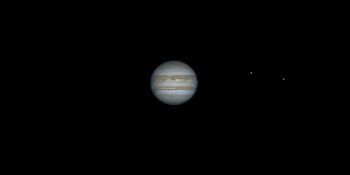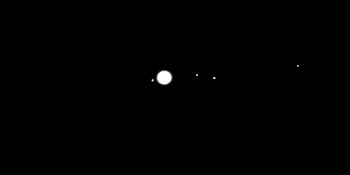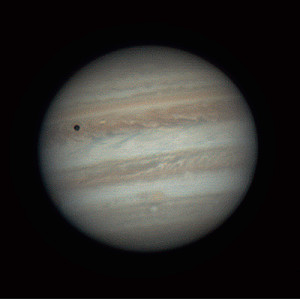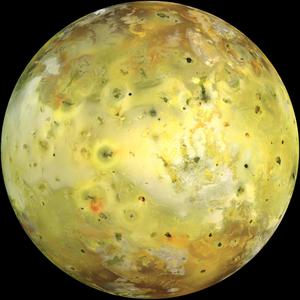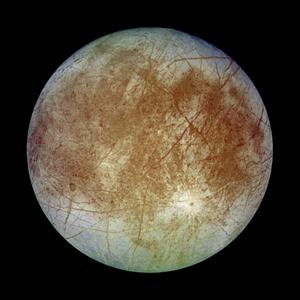Glossary term: Satellites galiléens
Description: Les satellites galiléens sont les quatre satellites, ou lunes, les plus grands et les plus brillants, en orbite autour de la planète Jupiter : Io, Europe, Ganymède et Callisto. Io est la plus proche de Jupiter et possède des centaines de volcans actifs. Le volcanisme de Io s'explique principalement par le fait qu'elle est "malaxée, déformée, comprimée" par les effets de marée de la gravité de Jupiter. Toute la surface d'Europe est recouverte de glace. Sous la glace se trouverait un océan d'eau liquide, l'un des meilleurs candidats pour abriter la vie en dehors de la Terre dans le système solaire. Ganymède est la plus grande lune de notre système solaire, et aussi celle qui a la plus grande masse, avec deux fois la masse de la Lune de la Terre. Callisto a presque exactement la même taille que la planète Mercure, mais sa masse ne représente qu'un tiers de celle de Mercure.
Les quatre lunes galiléennes ont été découvertes par Galileo Galilei (Galilée en Français) en 1610, dans le cadre de sa campagne pionnière d'utilisation d'une lunette astronomique pour des observations du ciel. Galilée a pu constater qu'au fil du temps, les quatre lunes orbitent autour de Jupiter comme un système solaire miniature. Cette observation a joué un rôle important dans l'évolution du consensus scientifique, qui est passé d'une vision du système solaire centrée sur la Terre (géocentrique) à une vision centrée sur le Soleil (héliocentrique).
Related Terms:
See this term in other languages
Term and definition status: The original definition of this term in English have been approved by a research astronomer and a teacher The translation of this term and its definition is still awaiting approval
The OAE Multilingual Glossary is a project of the IAU Office of Astronomy for Education (OAE) in collaboration with the IAU Office of Astronomy Outreach (OAO). The terms and definitions were chosen, written and reviewed by a collective effort from the OAE, the OAE Centers and Nodes, the OAE National Astronomy Education Coordinators (NAECs) and other volunteers. You can find a full list of credits here. All glossary terms and their definitions are released under a Creative Commons CC BY-4.0 license and should be credited to "IAU OAE".
If you notice a factual or translation error in this glossary term or definition then please get in touch.
Related Media
Jupiter's Rotation, by Vishal Sharma, India
Credit: Vishal Sharma/IAU OAE
License: CC-BY-4.0 Creative Commons Attribution 4.0 International (CC BY 4.0) icons
Jupiter Moons Movie2, by Nicolas Hurez, Paul-Antoine Matrangolo, and Carl Pennypacker, United States of America
Credit: Nicolas Hurez, Paul-Antoine Matrangolo and Carl Pennypacker/IAU OAE
License: CC-BY-4.0 Creative Commons Attribution 4.0 International (CC BY 4.0) icons
Jupiter, Io and its shadow, by Ralf Burkart, Germany
Credit: Ralf Burkart/IAU OAE
License: CC-BY-4.0 Creative Commons Attribution 4.0 International (CC BY 4.0) icons
Io
Credit: NASA/JPL/Université d'Arizona credit link
License: PD Public Domain icons
Europe
Credit: NASA/JPL/DLR
License: PD Public Domain icons
